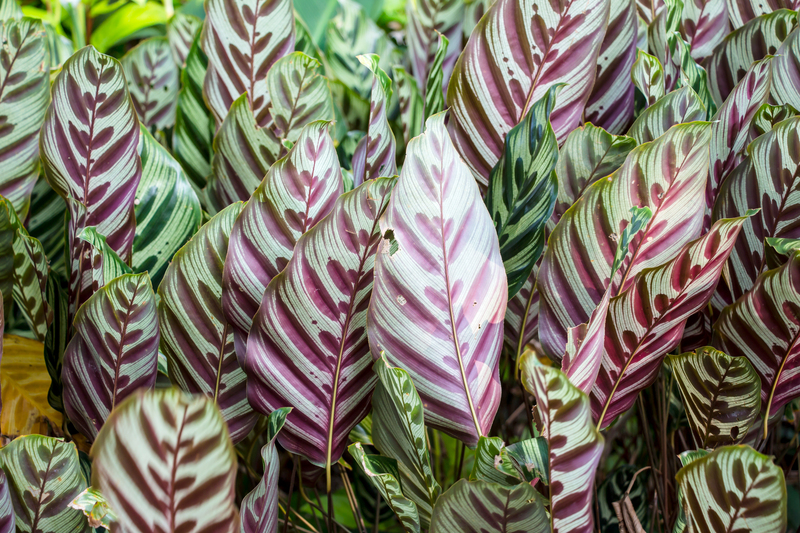Elevate Your Garden Game: 3 Tips for Weed Control
Posted on 17/06/2025
Are persistent weeds threatening to take over your beautiful garden? If so, you're not alone. Weeds are every gardener's nemesis, stealing nutrients, sunlight, and precious space from your beloved plants. Fortunately, with the right strategies, you can reclaim your garden and keep it thriving all season long. This comprehensive guide shares three game-changing weed control tips that will elevate your gardening experience and help you maintain a lush, weed-free oasis.
Understanding The Importance of Effective Weed Control
Weed management is more than a cosmetic issue; it's vital for garden health and productivity. Weeds compete aggressively with desired plants for resources like light, water, and nutrients. They can also harbor pests and diseases, which risk spreading to your vegetables, flowers, and shrubs. By mastering efficient weed control strategies, you are setting up your garden for lush growth and maximum yields.
- Improved aesthetics: A weed-free garden looks neat, welcoming, and well-cared for.
- Better plant health: Your crops and ornamentals benefit from reduced competition and stress.
- Pest and disease prevention: Fewer weeds mean fewer hiding spots for pests and pathogens.

3 Proven Tips to Raise Your Gardening Game With Effective Weed Control
1. Mulching: Nature's Best Defense Against Weeds
Perhaps the most effective and environmentally-friendly weed management technique is mulching. By covering the soil with a protective layer, mulch prevents weed seeds from receiving the sunlight they need to germinate and thrive. Additionally, mulching helps retain soil moisture, regulate soil temperature, and add essential organic matter as it biodegrades.
Best Mulch Materials for Weed Control
- Organic mulch: Such as shredded bark, straw, grass clippings, or compost. As these materials break down, they enrich your soil while keeping weeds suppressed.
- Inorganic mulch: Landscape fabric, black plastic, or gravel can be used in pathways or areas where you want long-term weed suppression.
Tip: Apply a 2-4 inch thick layer of mulch around plants, making sure not to pile it up against the stems to avoid rot. Remember to top up mulch as it decomposes for ongoing weed control benefits.
- Suppresses weed growth by blocking sunlight from reaching the seeds.
- Enhances soil fertility (for organic mulches) over time.
- Reduces the need for frequent watering by maintaining soil moisture.
How to Mulch for Maximum Weed Prevention
Effective weed prevention begins with soil preparation. Remove any visible weeds before laying down mulch. Overlap mulch layers, especially when using sheets or fabric, to prevent weeds from sneaking through cracks. For gardens with persistent perennial weeds, consider adding an extra layer of newspaper or cardboard beneath your mulch to provide additional protection.
2. Hand Weeding: Precision And Prevention
Although it may seem old-fashioned, hand weeding is still one of the most reliable ways to keep your garden weed-free -- especially for small plots and intricate flower beds. When tackled regularly and correctly, pulling weeds by hand ensures that pesky intruders don't get a chance to establish themselves or go to seed.
Best Practices for Efficient Weed Removal
- Attack when the soil is moist: After rainfall or watering, weed roots come out more easily, reducing disturbance to your crops.
- Grab by the base: Hold weeds by their base and pull gently but firmly to remove the entire root system. Pulling only the tops often leaves roots behind, allowing quick regrowth.
- Use specialized tools: Tools like a dandelion fork, hoe, or hand trowel can ease the process and help cut out stubborn or deep-rooted weeds.
Tip: Stay vigilant. A few minutes of weeding every week can save you hours of backbreaking labor later. Prioritize young, fast-multiplying weeds that can quickly go to seed and spread.
How To Prevent Future Weed Problems
- Act fast: Remove weeds before they flower or set seed to avoid a new generation of intruders.
- Dispose responsibly: Don't compost seeding weeds or aggressive perennials; bag and remove them instead.
Hand weeding can be added to your gardening routine while relaxing outdoors. Enjoy the process, immerse yourself with nature, and monitor your plants' progress while maintaining effective weed prevention.
3. Strategic Planting and Dense Spacing
One of the best natural weed control methods is harnessing the power of your desired plants. Planting closely-spaced crops or ground covers can effectively shade the soil, outcompete weed growth, and minimize bare patches where weeds thrive.
Smart Plant Choices That Suppress Weeds
- Ground covers: Vinca, creeping thyme, sweet woodruff, or sedum are decorative and form dense mats that smother weeds.
- Fast-growing annuals: Marigolds, cosmos, and nasturtiums quickly fill gaps between perennials, reducing weedy intrusions.
- Vegetable crops: Lettuce, spinach, or radishes have short growing seasons and can be interplanted for dense coverage.
How to Plan and Space Plants for Maximized Weed Suppression
Follow recommended spacing on seed packets or plant labels, but lean toward denser arrangements where possible. The goal is to have your plants' leaves touch and shade the soil quickly after planting or transplanting. This diminishes the amount of exposed soil available for weed seeds to take root.
Combine strategic planting with ground covers and succession sowing to reduce weeding chores over the growing season. The denser the canopy, the fewer the weeds.
Bonus Tips: Extra Tactics for Long-Lasting Weed Management
Beyond these three core strategies, a few additional habits can help you win the war against weeds for good. Integrate these bonus weed control tips into your regular garden care routine for superior results:
- Water wisely: Use drip irrigation or soaker hoses to deliver water directly to your plants' roots -- not to the open soil where weed seeds lurk.
- Inspect regularly: Walk through your garden every few days to spot and address emerging weeds before they grow large.
- Edge your beds: Use a sharp spade or edging tool to define bed boundaries, cutting off grass or creeping weeds before they invade planting areas.
- Use pre-emergent weed barriers: In early spring, applying a pre-emergent organic weed inhibitor (like corn gluten meal) can hinder weed seed germination in flower beds and lawns.
- Don't let weeds go to seed: One weed going to seed can mean hundreds of new weeds next year. Remove flowering weeds promptly!
Understand Weeds: Identify, Prevent, and Outwit
Not all weeds are created equal. A major step in elevating your garden weed control game is learning to identify problem species and understand their unique growth habits.
Types of Garden Weeds
- Annual weeds: Examples include crabgrass, chickweed, and lamb's quarters. These complete their lifecycle in one season and spread primarily by seed.
- Perennial weeds: Examples include dandelion, bindweed, and quackgrass. They return year after year, often with deep or spreading root systems that are hard to eliminate.
- Biennial weeds: Examples include burdock and wild carrot. These take two years to complete their lifecycle and can be a hidden threat if not managed early.
Prevention is Better Than Cure
Successful weed management is all about preventing weeds from taking hold. Combine the above tips -- mulching, hand weeding, and dense planting -- with year-round vigilance for long-term success. Remember, a weed pulled before it sets seed is a problem you won't face again next season!

Frequently Asked Questions About Weed Control
Q: Is chemical weed control ever necessary?
While some gardeners turn to herbicides for severe infestations, non-chemical methods are safer and more sustainable for the environment. Chemical controls should be used as a last resort, carefully and selectively, and always according to the manufacturer's instructions. Regular, proactive methods as outlined above often eliminate the need for harsh chemicals altogether.
Q: What should I do if I have invasive weeds?
Invasive species like bindweed, Canada thistle, or Japanese knotweed require persistence. Cut back relentlessly, never let them flower, and consider solarization (covering the soil with clear plastic for several weeks to 'cook' weed roots) for severe invasions. For stubborn perennials, spot treatment with an organic herbicide may be considered.
Q: When is the best time to weed?
The best time to weed is after rainfall or after watering, when soil is soft. Early in the growing season, tackling weeds before they mature prevents headaches later. Stay consistent for the best results!
Conclusion: Cultivate a Weed-Free, Thriving Garden
There's no need to let weeds dictate your garden's fate. By implementing these top tips for weed control -- mulching, diligent hand weeding, and strategic planting -- you'll elevate your garden game to new heights. Combine these methods with ongoing vigilance and you'll enjoy a garden that's healthy, beautiful, and weed-free, season after season.
Ready to put these strategies into action? Make a plan, gather your mulch, schedule weekly garden check-ins, and reimagine your planting schemes. Soon, you'll spend far less time battling weeds and far more time enjoying the fruits -- and flowers -- of your labor.
Elevate your garden's health, beauty, and productivity by mastering the art of weed management today!



